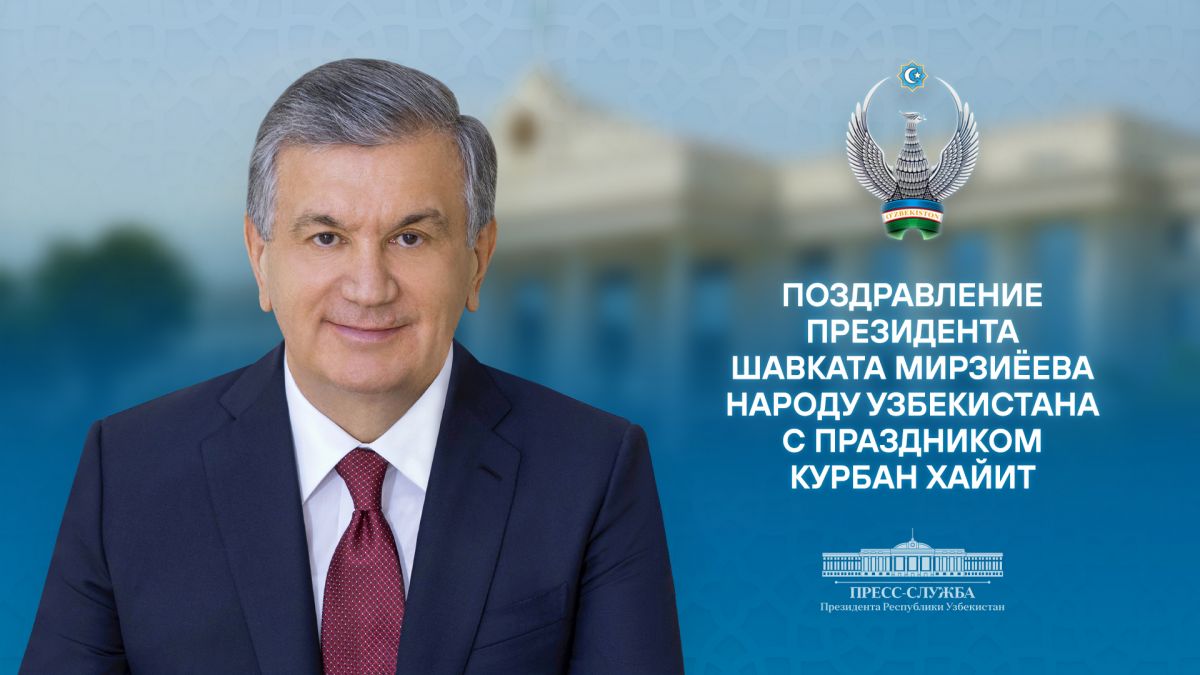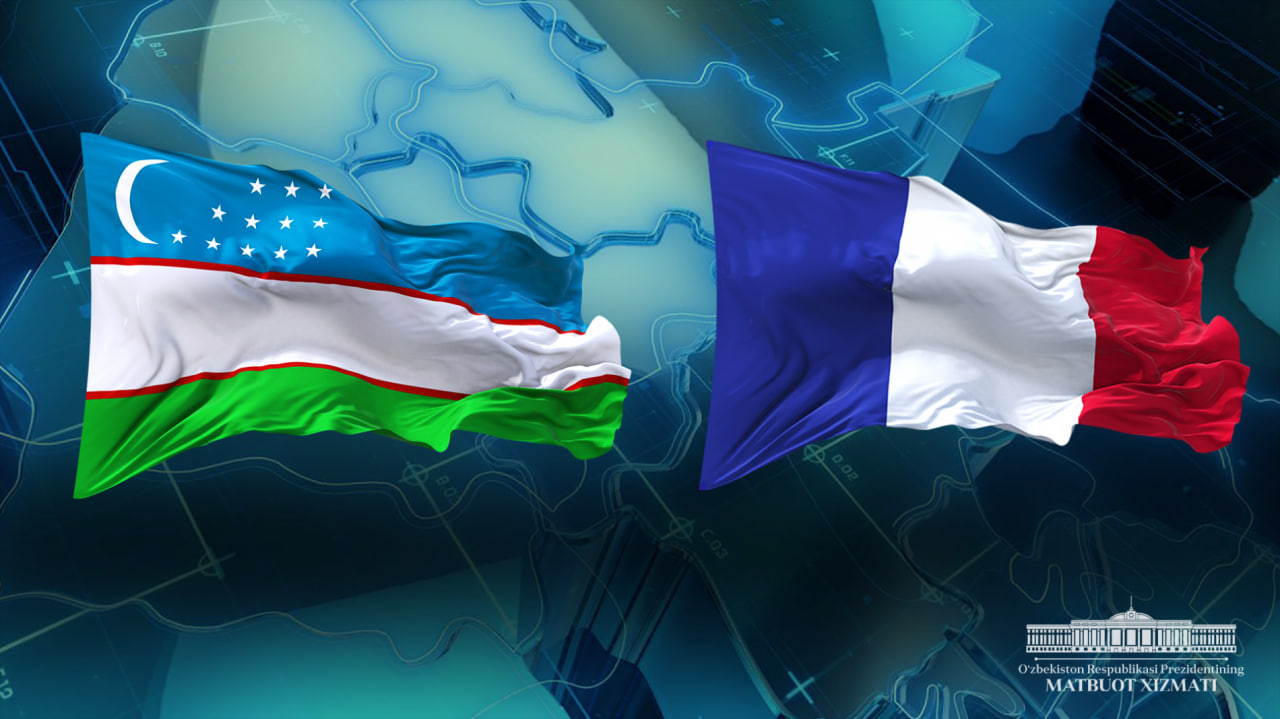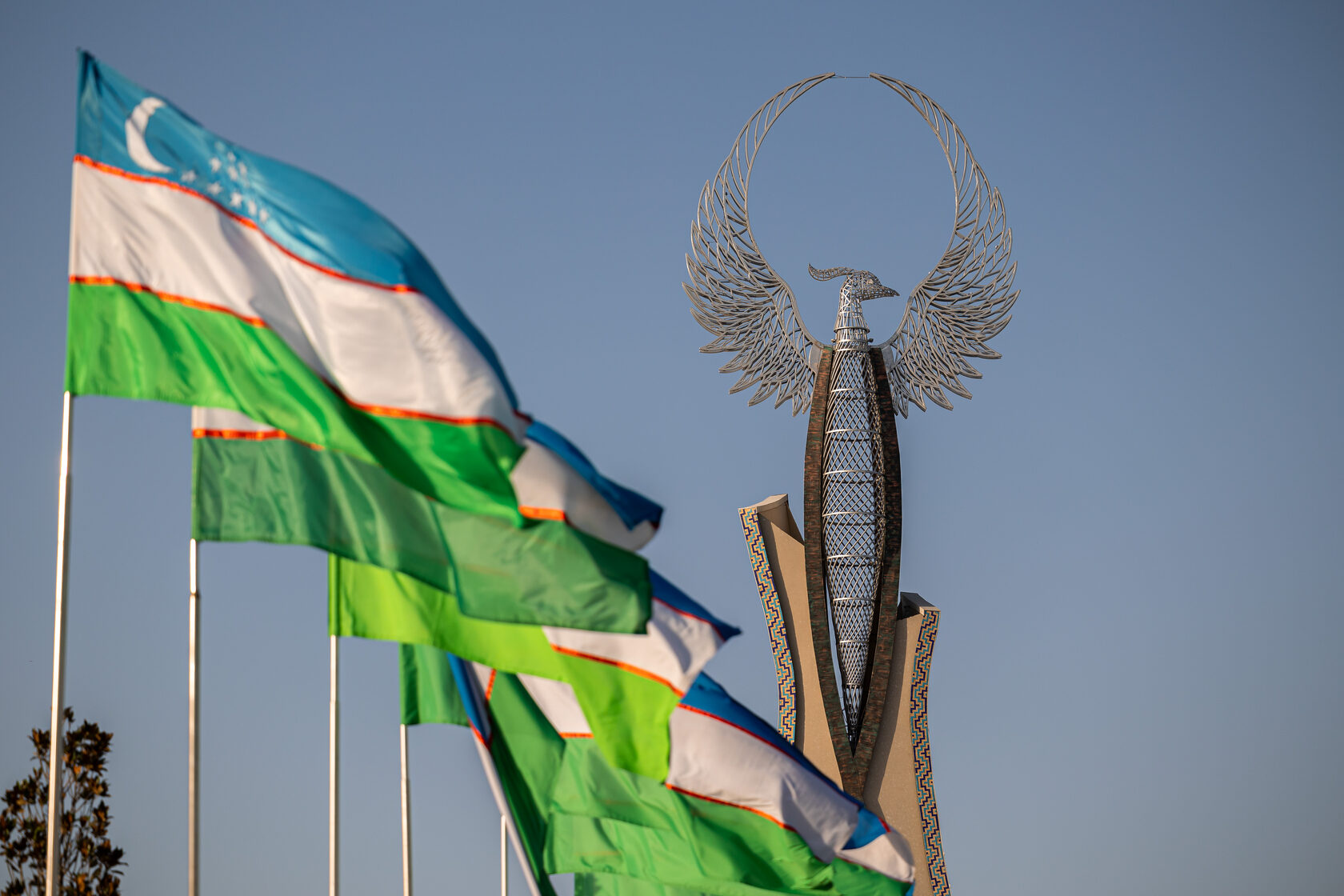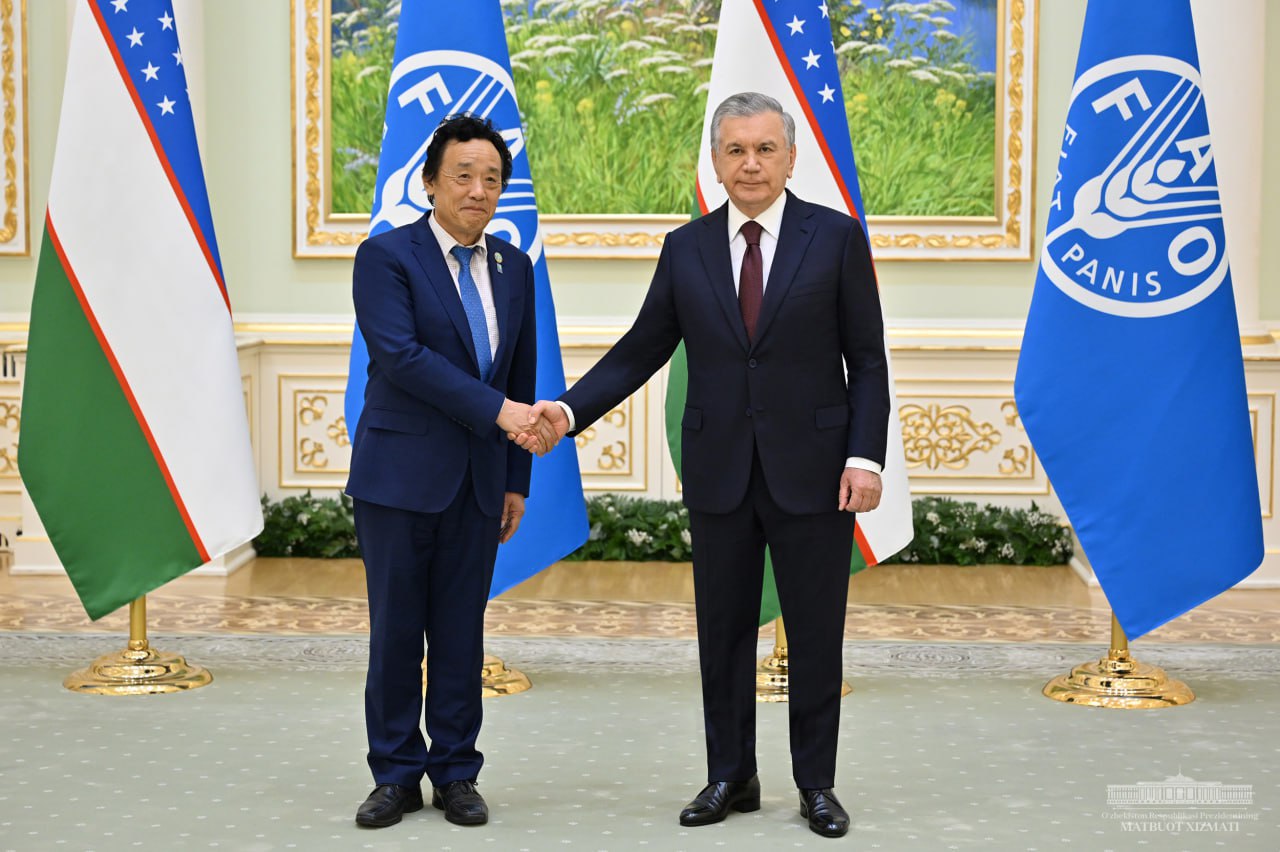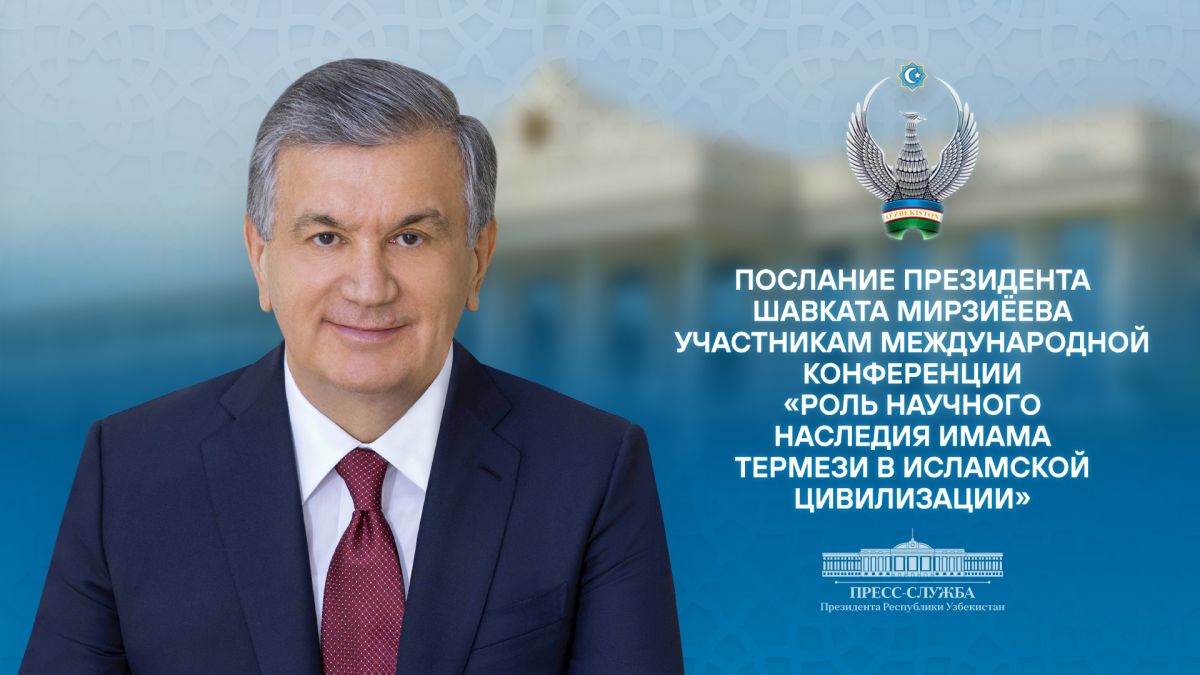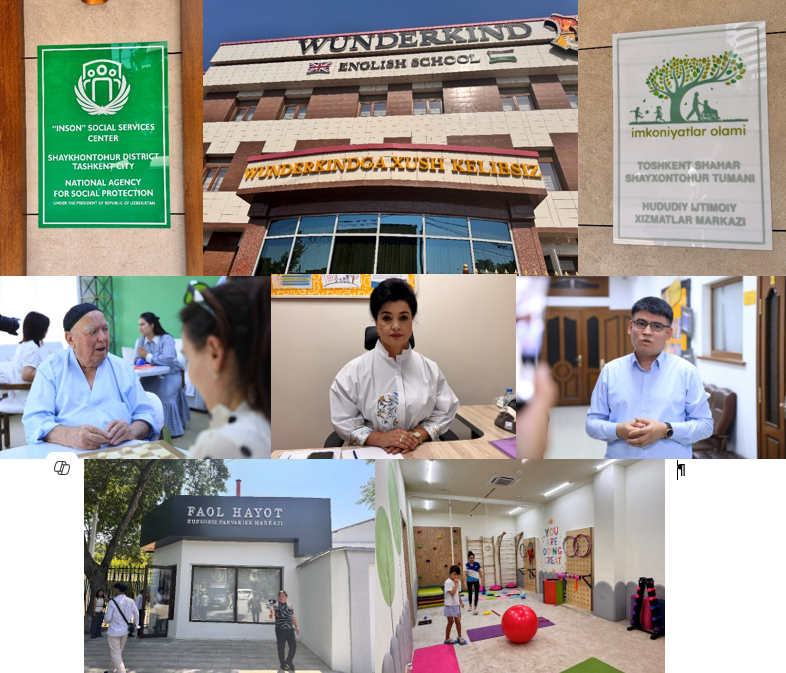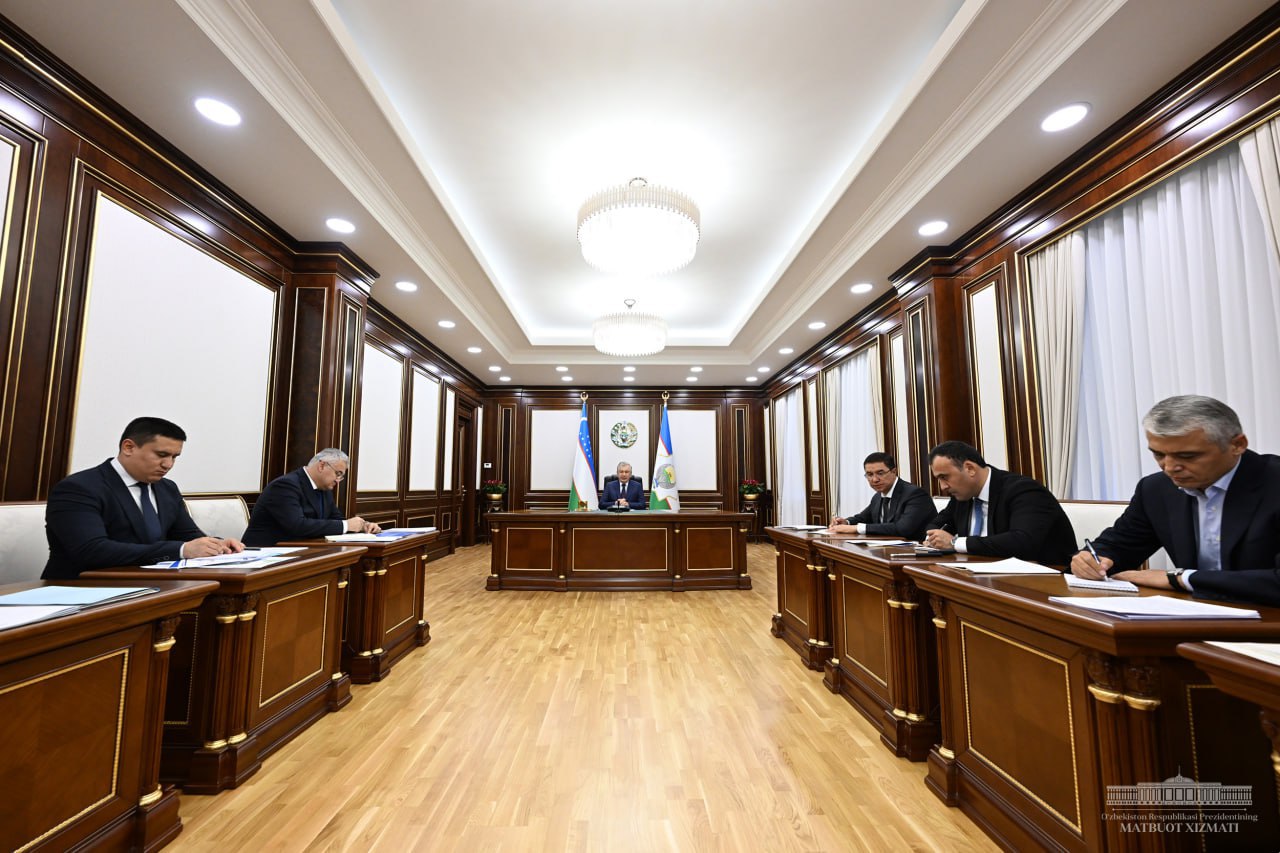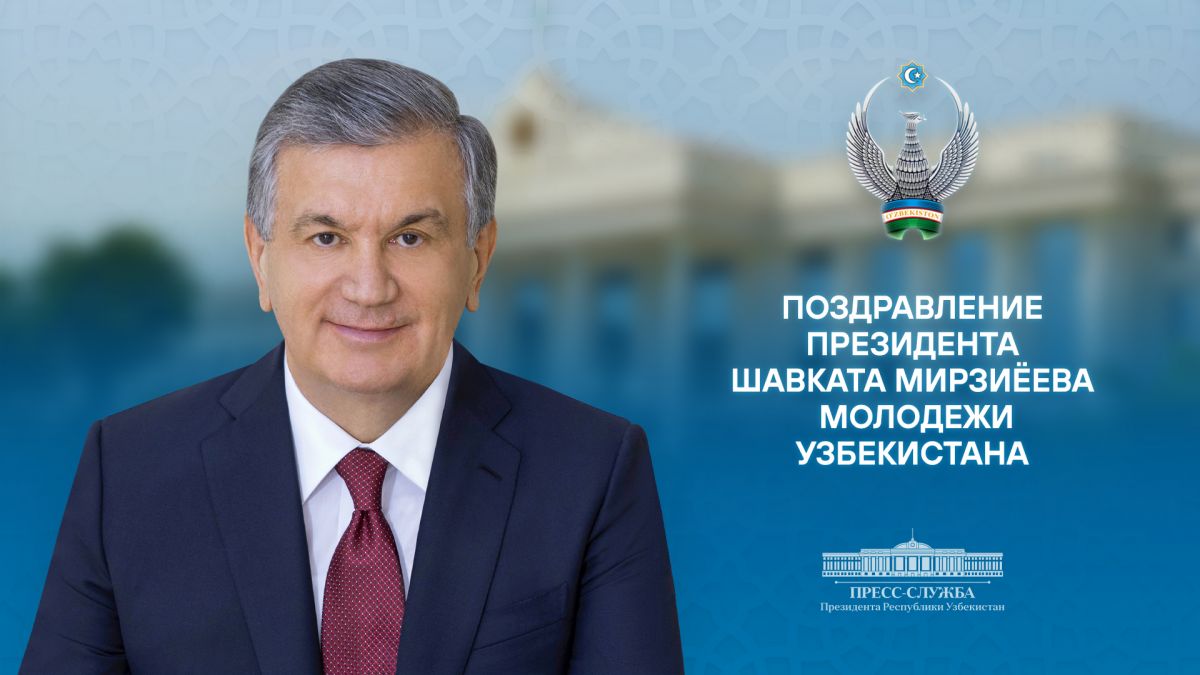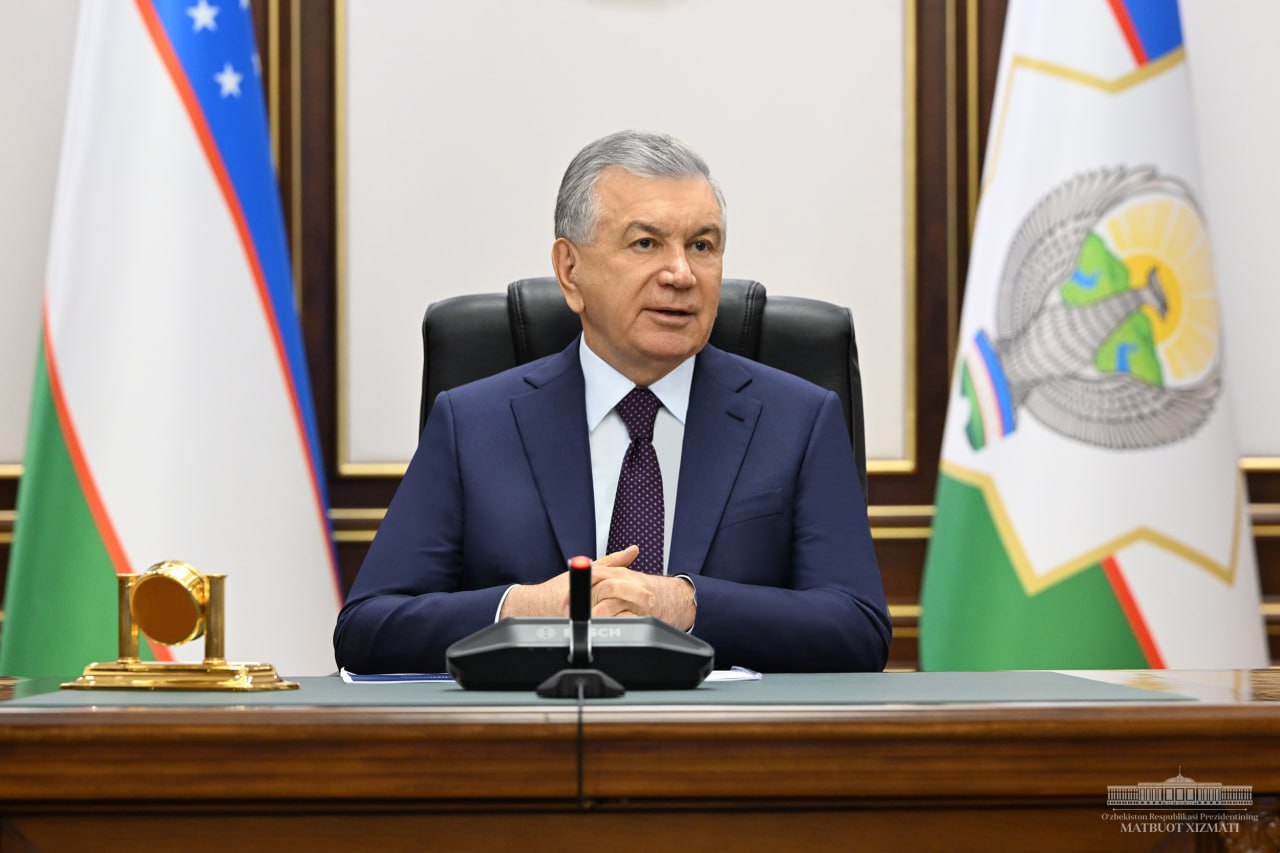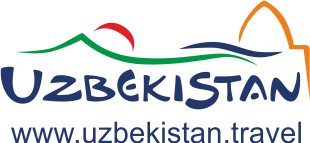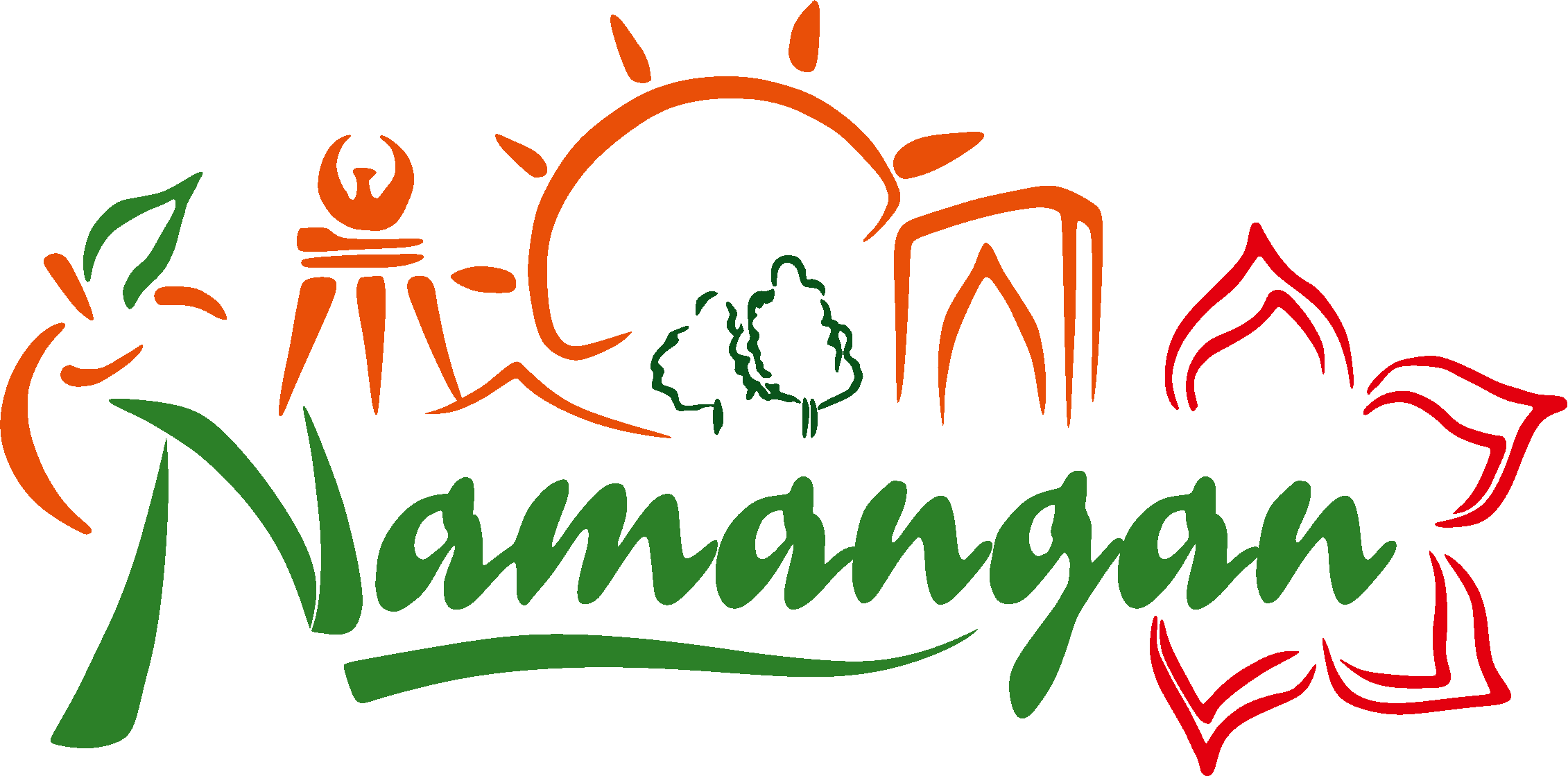Phone
Consular Issues
Phone
Uzbekistan news
We recommend
Congratulations to the people of Uzbekistan on Kurban Hayit holiday
📅 15.06.2024
Dear compatriots!
Sincerely, from the bottom of my heart, I congratulate you, all our people on the holiday of Kurban Hayit, which has come in our country, which is being transformed and illuminated with the light of peace, kindness and harmony every day.
In these blessed moments we all deeply feel the spirit and joy of the great holiday and give immense gratitude to the Almighty for the fact that we meet such bright days together with our people.
Today, Kurban Hayit, firmly established in people's lives as a symbol of mercy, generosity and humanism, is gaining more and more significance, consonant with the content of large-scale reforms in the New Uzbekistan, in which respect for human honor and dignity comes to the fore in all spheres.
It should be especially noted that our sacred religion and this bright holiday, which embodies its humanistic essence, serves as a source of strength and inspiration for us in all good deeds aimed at strengthening the atmosphere of peace and tranquility, friendship and cohesion in mahallas and families, caring for the older generation, youth and women, low-income families, and making sure that no one is left behind.
Dear friends!
In these bright days, when our hearts are filled with joy, we talk about the great work carried out in recent years to revive the original spiritual values, to improve the sacred places, to create favorable conditions for the Muslims of the country to freely perform religious rites, including hajj and umrah.
In a short period of time, international scientific centers of Imam Bukhari, Imam Termezi and Imam Maturidi have been organized. The memorial complexes of Abu Iso Termezi, Abu Muin Nasafi, Sulton Uwais Karani and Suzuk Ota have been radically transformed. Work on the construction and equipping of the Imam Bukhari memorial complex and the Centre for Islamic Civilization is continuing apace. Majestic mosques are being built in many towns and villages.
Over the past seven years, more than 60 thousand Muslims of the country have made the Hajj. These days 15 thousand more of our compatriots are making pilgrimage to two sacred cities - Mecca and Medina, having realized their most cherished dream.
In such blessed moments, when good thoughts come true, we wish them with all our heart to fully perform the rites of Hajj and safely return to their homeland.
On the eve of the celebration of Hayyit, during our telephone conversation with the Chairman of the Muslims' Board, the Honorable Mufti Sheikh Nuriddin Kholiknazar, who is staying in the holy Mecca, he emphasized the created conditions necessary for our compatriots to perform the rites of Hajj. We hope that, having returned home, our pilgrims will become an example in further strengthening the atmosphere of kindness and mutual assistance in the society, in the struggle of enlightenment against ignorance, strengthening the education of youth and establishing harmony in families.
Dear compatriots!
Today we sincerely congratulate our compatriots abroad on this holiday, wish them health, happiness and success.
We convey warm congratulations to believing Muslims in the states of near and far abroad and sincere wishes of peace and progress to their peoples and countries.
May the ongoing wars and conflicts in different regions cease! May peace reign on the Earth forever!
Dear friends!
Today, together with our multinational people, we are building a new Uzbekistan. The new Uzbekistan is a new life, a new development, a happy future.
If we unite more firmly and continue the initiated reforms with even greater determination, we will undoubtedly achieve this great goal.
We will surely raise our children to be a generation of true patriots, highly educated, possessing modern knowledge and professions.
I wish you happiness and success on this path.
May the Almighty protect our nation!
I once again congratulate you on the holy holiday of Kurban Hayit, wish you health, peace and prosperity to your families.
Shavkat Mirziyoyev,
President of the Republic of Uzbekistan
Information on plans in automotive industry presented
📅 26.11.2024
President Shavkat Mirziyoyev was reported the current work and plans for 2025 in automotive industry.
The share of automotive industry in the country's industry is 10 percent. Over the past ten months, 338 thousand passenger cars were produced. Components of 1.4 thousand types were localized. Thanks to economic measures, the cost price in the industry decreased by 4 percent. Exports amounted to $455 million.
The chairman of “Uzautosanoat” JSC presented information on plans and future tasks.
Next year it’s planned to manufacture 450 thousand cars and elevate exports to $700 million. It’s planned to strengthen cooperation with regional enterprises and boost localization. In particular, 63 projects worth $325 million on developing production of 700 components will be implemented.
As is known, together with “BYD” company an automotive plant was built in Jizzakh. Currently such automobiles as Chazor and Song Plus Champion are produced there. In the upcoming years the model range is planned to be expanded. At the second stage worth $300 million it’s planned to expand the share of electric cars’ production to 200 thousand per year, at the third – to 500 thousand.
The Head of our state instructed to consistently master the production of components and spare parts for electric cars in agreement with the Chinese partners.
The task was set to form orders for local enterprises based on cooperation.
The priority of water resource management reform in Uzbekistan is water conservation and its rational use
📅 24.06.2024
Today, as global climate changes are observed, the population is growing, and industrial sectors are rapidly developing, the value of water resources is increasing not only in the Central Asian region but also worldwide.
According to the data, over the past 30 years, the air temperature in our region has increased by one and a half degrees, as a result of which about a third of the centuries-old glaciers in the highlands have melted, and the volume of water in rivers and streams has decreased slightly.
If current climate trends continue, in the next twenty years, the flow of the two large rivers, Amu Darya and Syr Darya, may decrease by 15%. This would result in a 25 percent reduction in per capita water availability and agricultural crop yields.
These are not just numbers, but indicators related to the fate and well-being of the people living in the region.
According to scientists, by 2040 in some areas of Central Asia, the need for water resources will triple. Over time, economic damage could reach 11% of the region's gross domestic product. The United Nations (UN) warns that countries in the region are currently losing up to US$2 billion a year due to water scarcity and inefficient use. Therefore, if appropriate measures are not taken now, it is inevitable that the countries in our region will face dire consequences of water shortages.
Under the leadership of the President of Uzbekistan, Shavkat Mirziyoyev, special attention is being paid to the comprehensive development of the water management sector in our republic, the rational use of existing water resources, including the widespread introduction of digital and water-saving irrigation technologies, and remarkable results are being achieved in this regard.
In his speech at the 78th session of the UN General Assembly on September 19, 2023, the leader of Uzbekistan emphasized the issue of water resource shortages in Central Asia, supported the establishment of the position of the UN Secretary General's Special Representative on Water Resources, and proposed creating a platform for water-saving technologies in Central Asia. In the process of using the "United Nations-Water Resources" mechanism, he emphasized his support for attracting and implementing the most advanced technologies.
This means that Uzbekistan will take the initiative in creating a platform for water-saving technologies in Central Asia, while also seeking to involve the international community in the process.
For more than 30 years since its establishment, the International Fund for Saving the Aral has become the most important platform for regional cooperation in the fields of water management and ecology. In the face of new risks and threats arising because of global climate change, the role and importance of the fund are increasing.
On September 15, 2023, President Shavkat Mirziyoyev put forward the initiative to develop and implement new, agreed-upon decisions for the long-term perspective within the framework of this structure at the meeting of the Council of Heads of the Founding States of the International Fund for Saving the Aral held in Dushanbe. Reflecting the spirit of today, he emphasized the need to further improve the fund's legal framework and modernize its institutional mechanisms.
It should be noted that in the country’s domestic policy over the past seven years, at the initiative of the President, large-scale reforms in the water sector have been implemented. To manage state policy in the field of water management, a separate Ministry of Water Resources was created and the Concept for the development of the industry for the period until 2030 was approved.
As a logical continuation of these reforms and to solve systemic problems at the middle and upper levels of the water management system, on May 7, 2024, the President of Uzbekistan signed the decree "On Setting Priorities for the Introduction and Development of a Modern Management System in Water Resources." According to this document, the activity of the Ministry of Water Resources was divided into three parts, setting up a vertical management system. At the upper level is the management of the state water policy, the regulator; the middle level is engaged in the operation and construction of water management facilities and the introduction of business processes into the sector; and the lower-level handles supplying water directly to consumers.
In the middle stage, an agency for the exploitation of water resource facilities is being set up that operates as an independent legal entity. The agency includes the Ministry of Water Resources of the Republic of Karakalpakhstan and regional irrigation systems basin departments, main canals, water reservoirs, and pumping station utilization departments, as well as land-improvement expeditions.
The department for the implementation of water management projects participates as a customer in projects funded by the budget and foreign investments. The decree envisages a 22% increase in the salary of middle- and high-level employees working in the ministry system, starting on July 1, 2024, and a 60% increase starting in 2025. It should be mentioned that starting in January 2024, the salary of lower-level employees has been doubled, and several incentive mechanisms are being used.
As a result of the accurate calculation of available water resources, special attention is paid to the introduction of water-saving technologies, resulting in abundant and high-quality harvests from agricultural crops. Nevertheless, the prevention of water scarcity remains one of the most important directions for Uzbekistan.
Uzbekistan is a country with a large water infrastructure in the Central Asian region; the total irrigated cropland exceeds 4.3 million hectares.
As one of the five priority directions of the "Uzbekistan-2030" strategy, which defines the goals of sustainable development of the country, the task of saving water resources and environmental protection is emphasized, placing great responsibility on water management employees.
To reduce water losses in irrigation networks, the year 2024 was announced as a "breakthrough year for concreting canals" in the water industry at the initiative of the President. For this purpose, 5,000 kilometers of irrigation networks, of which 1,500 kilometers are main and inter-farm and 3,500 kilometers are internal, have been concreted this year. To date, 525 kilometers of canals have been reconstructed, of which 355 kilometers have been concreted. The length of canals concreted by clusters and farms has exceeded 13,500 kilometers.
In recent years, the areas covered by water-saving technologies in the country have reached 1.3 million hectares. Of this, drip irrigation accounts for 478,000 hectares, sprinkler irrigation for 55,000 hectares, and discrete method irrigation for 29,000 hectares. Over 700,000 hectares have been leveled using laser leveling equipment.
Work on the introduction of water-saving technologies, which started in previous years, is being continued consistently. This year alone, it is planned to introduce cost-effective technologies on 500,000 hectares of land and to fully cover all irrigated farming areas in the country with such technologies by 2030.
All possibilities and resources are being used for this. Today, the number of local enterprises producing equipment and components for water-saving technologies in Uzbekistan has reached 55, with plans to increase this number in the future.
In recent years, 11,446 "Smart Water" devices, online water level monitoring meters in 1,704 pumping units, and online monitoring of seepage water levels have been installed in 6,746 reclamation monitoring wells. To manage water resources from one point without human intervention, the management processes of 65 large water management facilities were automated.
It is planned to save 8 billion cubic meters of water in 2024 through the concreting of channels, the introduction of water-saving technologies, the digitization of the industry, the implementation of "smart" devices, and effective water management.
It should be noted that 60 percent of the irrigated cropland in the country is supplied with water through pumps. There are more than 1,600 pumping stations in the Ministry's system, and due to their modernization, installation of modern energy-saving devices, and the introduction of public-private partnerships, electricity consumption has been reduced by 1.5 billion kWh in the last seven years.
In the coming years, the total cost of the water industry will be $6.0 trillion. Agreements for 463 public-private partnership projects worth significant amounts in soums were signed. In 2023, all water management facilities in five districts and 300 pumping stations across the republic will be transferred to the private sector.
This transfer increases work efficiency, saves up to 30% on electricity at pumping stations, and reduces salary deductions by 13%.
The "Irrigators' School" was launched in cooperation with the Ministry of Water Resources, the "Tashkent Institute of Irrigation and Agricultural Mechanization Engineers," the National Research University, and "Agrobank." Highly qualified specialists from abroad are organizing one-week-long free training courses for designers, contractors, managers of farms, and cluster enterprises from all districts of the republic.
In short, life itself proves that the only solution to mitigate the water shortage in our region is to save water and use it wisely.
Press service of the Ministry of Water Resources
of the Republic of Uzbekistan
President of the Republic of Uzbekistan to pay a state visit to France
📅 13.03.2025
At the invitation of President of the French Republic Emmanuel Macron, President of the Republic of Uzbekistan Shavkat Mirziyoyev will pay a state visit to this country on March 11-13.
The agenda of the visit to Paris envisages talks and events at the highest level, as well as a number of meetings with official and business circles of France.
The agenda of the upcoming contacts includes issues of further development and strengthening of Uzbek-French multifaceted relations.
Priority attention will be given to expanding mutually beneficial cooperation in trade-economic and investment-financial spheres, promoting cooperation projects with leading companies and enterprises of France.
It is planned to adopt a package of intergovernmental and interdepartmental agreements as a result of the summit.
In addition, the Head of our state will meet with UNESCO Director-General Audrey Azoulay to discuss practical aspects of preparing and holding the 43rd session of the Organization's General Conference in Samarkand this autumn.
It is worth noting the intense program of events on the eve of the forthcoming visit.
Reforms in Uzbekistan are based on the principle “The stronger public control, the more humane, free and fair the state is”
📅 25.07.2024
The most important sign of civil society is manifested in the fact that citizens exercise complete control over the activities of state structures. According to article 36 of the new version of the Constitution of Uzbekistan, our citizens have the right to participate directly and through their representatives in the management of the affairs of society and the state. Such participation is carried out through self-government, referendums and the democratic formation of state bodies, as well as public control over the activities of state bodies. The procedure for exercising public control over the activities of state bodies is established by law.
In order to organize and regulate relations in the field of public control over the activities of state bodies and institutions, the law “On Public Control” was adopted on April 12, 2018. According to this law, public control is carried out in such forms as appeals and requests to state bodies, public discussions, public hearings, public monitoring, and the study is carried out by citizens' self-government bodies in such forms as hearing reports and information from officials of state bodies.
Consistent work is underway in our country to implement public control and improve the regulatory framework governing this area. By presidential decree dated May 4, 2018, the badge "For contribution to the development of civil society" was established; the decree of the President of Uzbekistan dated July 4, 2018 "On measures to organize the activities of public councils under state bodies" was of great importance for accelerating work in this area. This resolution establishes the procedure for organizing the main tasks, functions, powers and activities of the public council under state bodies, which basically provides that the public council is created by the decision of the head of the state body, carries out its work on a voluntary basis and it is assumed that it will conduct its work on a public basis, as well as be considered as a permanent advisory body whose decisions will be advisory in nature.
As Shavkat Mirziyoyev noted, “There is no more effective tool for achieving the supremacy of the Constitution and the law than public control.” Public control is an important institution of democracy and people's power; it serves to ensure the protection of the rights and legitimate interests of citizens by monitoring the activities of state bodies.
In recent years, special attention has been paid in our republic to ensuring the participation of citizens in the management of society and public affairs, the creation of effective mechanisms for public control over the activities of the executive branch, and further strengthening the functions of public control. In particular, at the initiative of the President of Uzbekistan, a public chamber was established in 2020 in order to further strengthen public control and establish close cooperation between the state and society. It was noted that the public chamber should regularly study the opinion of the population, set specific tasks for government agencies to find solutions. The importance of implementing such influential forms of control as "public hearings", "public monitoring", "public expertise", and "public initiative" was demonstrated.
According to the decree of the President of the Republic of Uzbekistan "On measures to expand financing of projects formed on the basis of public opinion", adopted on October 25, 2022, an additional 335 billion soums were allocated for the implementation of 364 projects, each of which received more than 2 thousand votes in July-September 2022.
In recent years of modern development in our republic, the system of public administration has been improved, effective mechanisms of dialogue with the people have been introduced, and the effectiveness of the role and activities of the Mahalla Institute in the management of society has increased. Virtual and public reception rooms of the President of the Republic of Uzbekistan were created in order to ensure human interests, knowledge and solution of problems and needs of people. These structures have become a mechanism for in-depth analysis of problems on the ground and a criterion for increasing the responsibility of state bodies and officials to society and evaluating their activities.
To date, such systems as "online reception" and "virtual visit" have been introduced, allowing for quick and economical identification of problems on the ground in order to optimize their expenses related to the maintenance of the public administration apparatus, eliminate corruption factors and establish effective public control over budget spending.
As an example, it is worth mentioning that in recent years a new system of dialogue with the people has been created – the activities of the presidential virtual and people's reception rooms. Of the 9,465,000 applications received by the virtual reception of the President, about 9,379,000 have been considered, the rest are also being resolved in accordance with the procedure established by law. The results of the public discussion can also be found on the "portal for discussions of draft regulatory legal acts" (regulation.gov.uz), which is clearly seen in the example. To date, 25384 draft regulatory legal acts have been posted on this portal for public discussion, of which 25183 have already been completed.
In recent years, the study of public opinion has become publicly available. The Open Budget portal was launched to exercise public control over targeted budget expenditures. Citizens can send messages about violations of budget legislation through the Portal, suggestions for improving the budget process, while receiving information such as the state budget, budget execution through this portal. In particular, an initiative budget has been launched through the Open Budget information portal, which is held 2 times a year. Thanks to this portal, citizens are focused on solving problems through joint voting. In the first season (February) 2024, 35,575 initiatives were supported, for which 3,390.5 billion soums were allocated.
Establishing the accountability of public authorities to parliament and local councils, as well as the introduction of the Electronic Government system, led to a further strengthening of public control. As a result, today in our country there is a single interactive portal of public services (my.gov.uz), an open data portal (data.egov.uz), a portal for discussing draft regulatory documents (regulation.gov.uz), and a complex of information systems “License" (license.gov.uz), information system for automating the activities of Single Window centers (birdarcha.uz).
Since 2023, in order to improve the system for identifying and solving social problems among the population in our republic, the practice of monthly hearing information from the heads of relevant government bodies and organizations in the mahalla council has been established, and new forms of public control have been introduced - “mahalla control” groups and “survey” institutions mahalla chairmen." Also, on behalf of the President, the “digital mahalla” system and the “people’s control” platform were improved.
The “My Opinion” web portal, which is under the jurisdiction of the Public Chamber, was created in order to expand the opportunities of citizens in our country to participate in the management of the affairs of society and the state, to ensure the openness of the activities of representative bodies of state power, to ensure the viability and effectiveness of the public administration system. Through this portal, a citizen can send proposals on legislation on important issues of state and public importance in the form of an electronic collective appeal. The My Opinion web portal, which is under the jurisdiction of the Public Chamber, was created in order to expand the opportunities of citizens in our country to participate in the management of the affairs of society and the state, to ensure the openness of the activities of representative bodies of state power, to ensure the viability and effectiveness of the public administration system. Through this portal, a citizen can send proposals on legislation on important issues of state and public importance in the form of an electronic collective appeal "Meningfikrim.uz "(My opinion). To date, more than 6670 collective appeals and about 30,000 comments have been received through the portal.
In recent years, political parties, which are considered to be one of the main actors of civil society in our country, have been given not only ample opportunities for free participation in elections, but also control over the executive branch. Political parties also have the right to exercise public control based on the interests of the public and their electorate. During election processes, local observers at polling stations consist of representatives of political parties and citizens' self-government bodies.
The role of the media in developing openness and transparency in our society, establishing public control over the activities of government bodies and their officials, studying and resolving legal appeals from citizens is also incomparable. In particular, the number of media registered in 2016–2023 increased by 41%, that is, in 2016 their number was 1614, and by 2023 it reached 2140. The number of mobile Internet users also exceeded 33 million.
As can be seen from the above, the main purpose of public control is to ensure respect for the rights, freedoms and legitimate interests of citizens, to ensure legality in the activities of state bodies and officials, and to protect the interests of society.
The Uzbekistan 2030 strategy, developed based on the results of public discussions in order to create a fair and modern state serving the people, identified such priority tasks as: creating the necessary conditions for public participation in the activities of local councils, broad involvement of civil society institutions and the gradual digitalization of their activities, establishing the practice of assessing the activities of heads of state bodies and their deputies based on public opinion, and intensified continuation of work to form an unparalleled attitude towards corruption in society.
As a result of public control, the activities of state bodies in the country are objectively studied, their shortcomings are identified, various violations of legislation are prevented, public participation in the implementation of laws and their preparation is ensured, broader conditions are created for the prompt solution of various problems in society and the will of the population, and special attention should be paid to the fact that public control implies not only control over the quality of the work performed, but also the use of opportunities, as well as participation in their development.
In conclusion, I would like to note that in our republic, constitutional status has been given a state public control. In the new Uzbekistan, the participation of citizens in the management of the affairs of society and the state, including the development and improvement of public control over the activities of state bodies, provides ample opportunities for the full-fledged formation and strengthening of civil society in our country. If the public control in the country is strong, the state is more humane, free and fair.
N.S.Rasulova, candidate of historical sciences Associate professor of the University of Public safety of the Republic of Uzbekistan
The President of Uzbekistan noted the importance of adopting a long-term program of strategic partnership with FAO
📅 06.09.2024
President of the Republic of Uzbekistan Shavkat Mirziyoyev met with Director General of the Food and Agriculture Organization of the United Nations (FAO) Qiu Dongyu on September 5.
The head of the authoritative branch structure of the United Nations system is in Tashkent within the framework of the ongoing International Forum on Food Security and Sustainable Development Goals for Landlocked Countries.
At the beginning of the meeting, the UN High Representative expressed his deep gratitude to the head of our state for supporting the successful holding of the forum, which is attended by representative delegations from more than 30 countries of the world.
In the course of the conversation, the sides considered issues of further expanding the strategic partnership between Uzbekistan and FAO in effectively responding to contemporary challenges and threats.
The sides noted with satisfaction the fruitful results of practical interaction achieved in recent years. Thus, the qualitative indicators of implementation of the country cooperation program for the period until 2025 have doubled.
There are 34 projects in the active phase of implementation. Over the last year, 7 new projects were launched, including in the field of agriculture, school feeding, veterinary medicine, agrochemistry and other spheres.
The importance of preparation and adoption of a new five-year partnership program was emphasized.
Special attention was paid to promising joint projects and activities in the field of digitalization of the agro-industrial complex, exchange of advanced knowledge and experience, attraction of innovations and investments in improving the fertility of the land fund, cultivation and processing of organic agricultural products, modernization of irrigation systems, creation of modern clusters and logistics centers, research and development.
There was also an exchange of views on the global and regional situation related to food security.
Participants of the International Scientific and Practical Conference “The Role of Scientific Heritage of Imam Termezi in Islamic Civilization”
📅 21.10.2024
Dear forum participants!
Dear guests!
I sincerely congratulate you, all those who make a worthy contribution to the development of the holy religion Islam, on the opening of the international scientific-practical conference dedicated to the study of the scientific heritage of the great muhaddis Imam Termezi in the homeland of outstanding Muslim scholars - in Uzbekistan.
It is gratifying that today's authoritative forum is attended by renowned specialists in the field of Islamic studies - prominent scholars and ulema, experts and researchers. In your person we see the continuers of the good traditions of the great thinkers who are the pride of the Muslim world - Imam Bukhari and Imam Termezi.
May the Almighty bless you, I wish you happiness and prosperity!
Dear friends!
Speaking about our outstanding ancestors-scientists, bright representatives of the Islamic world of the Middle Ages, we, of course, among the first names of Hazrat Imam Termezi.
We are rightfully proud of this incomparable person, the favorite disciple of the great Imam Bukhari, who was honored with the high rank of Sultan of Muhaddis, who has been glorifying our region for twelve centuries with his undying works and high human qualities.
Imam Termezi is recognized in the world as one of the six great muhaddis, his collection of hadiths is among the most revered and reliable sources, and the Muslim Ummah bows before the name of this outstanding man.
Another practical expression of such recognition is the fact that the topic for discussion at today's conference was the unique works of Imam Termezi “Ash-Shamoil al-Muhammadiyya” and “Sunani Termiziyya”, as well as important issues concerning the scientific heritage of the Ulema Termezis and its relevance today.
Dear participants of the conference!
In recent years, a great work has been carried out in our country to study and popularize the invaluable heritage of many of our thinkers-theologians who made a great contribution to the development of the Islamic religion, to honor their memory, to improve the places associated with their life and activities, including Imam Termezi.
It should be noted that a magnificent memorial complex has been erected in his honor in Sherabad district of Surkhandarya province, and an international research center, a specialized Islamic secondary school and an Islamic institute have been opened in the city of Termez bearing his name.
These institutions, together with the International Islamic Academy of Uzbekistan, the Centre for Islamic Civilization, the Hadith Scientific School and other religious educational and research organizations, are studying the rich heritage of Imam Termezi in a comprehensive and in-depth manner. In particular, works of the thinker are published, scientific researches, books and artistic works are dedicated to him.
I hope that after familiarizing yourselves with the work carried out in this direction within the framework of the conference, you will express your opinions and proposals on further activation of cooperation in this field.
We, the heirs of great scientists, emphasizing that Islam is a religion of peace, goodness and humanism, on the way of realization of good hopes and aspirations of mankind, consider it our most important duty to jointly enrich this incomparable spiritual treasure and preserve it for future generations.
I express my deep gratitude to the scientists and ulema of our country and to you, dear guests, to all figures of science who show real dedication for such a noble goal.
The doors of the leading research and educational institutions of Uzbekistan are always open for you.
Greeting you once again from the bottom of my heart, I wish you health, new achievements in your scientific and creative activities, and a successful conference.
Shavkat Mirziyoyev,
President of the Republic of Uzbekistan
The development of Uzbek-Azerbaijani cooperation
📅 02.07.2025
Cooperation with colleagues from Azerbaijan is underway in this direction.
1. In the current geopolitical situation, there is a tendency of transition from traditional transportation routes to alternative, more reliable, involving the use of different modes of transport, which contributes to the growing attractiveness of multimodal transportation.
2. Uzbekistan's cooperation with Azerbaijan is strengthened
Uzbekistan Pioneers Unique Social Protection System in Central Asia
📅 25.07.2025
Uzbekistan is undergoing a large-scale transformation of its social protection system, aimed at improving the well-being of its citizens and enhancing the effectiveness of social services. A key driver of this process is the national development strategy “Uzbekistan – 2030”, which focuses on the comprehensive and high-quality modernization of the country’s social policy.
In recent years, Uzbekistan has introduced innovative approaches to supporting vulnerable groups, including low-income families, the elderly, persons with disabilities, victims of violence, women in difficult situations, and children deprived of parental care.
Reforms are being implemented both at the legislative level and through specific programs and projects. A significant milestone was the establishment in 2023 of the National Agency for Social Protection (NASP) under the President of Uzbekistan – the only consolidated, ministerial-level body of its kind in the region, responsible for coordinating the implementation of a new generation of social policy.
Unlike neighboring countries, where social functions are divided among several institutions, Uzbekistan has integrated all components of social protection into a single digital system managed by NASP. This has improved coordination, efficiency, accountability, and has led to real improvements in the lives of vulnerable population groups.
In 2021, Uzbekistan ratified the UN Convention on the Rights of Persons with Disabilities (CRPD). The country offers a range of benefits to companies and organizations that employ individuals with disabilities. Many institutions, streets, and bus stops across the country are gradually being adapted to accommodate people with disabilities.
A key focus of the reforms is the development of “Inson” Social Services Centers, established in 208 districts and cities across the country. These centers operate on a one-stop-shop model and provide over 100 types of social assistance, including psychological and legal counseling, food assistance, and targeted aid for 12 categories of citizens, such as persons with disabilities, low-income families, and the elderly.
All centers are fully digitized, integrated with state systems, and operate on an individualized support model. Each citizen undergoes a needs assessment and receives a personalized support plan with ongoing guidance through the recovery or reintegration process.
In every makhalla (community unit), social workers are assigned based on a tiered “region–district–makhalla” structure, according to the number of families and individuals in need.
In the second quarter of the year 2025, 1.787 million applications were submitted to “Inson” Centers. Of these, 1.204 million were processed, while 496,200 are under review. The most in-demand services include compensation for gas and electricity costs, child benefits, support for low-income families, and access to health resorts for seniors and persons with disabilities.
The “From Poverty to Prosperity” program, enacted by Presidential Decree on September 23, 2024, addresses issues of social orphanhood and care for children deprived of parental care. It focuses on the creation of conditions as close as possible to a family environment and on an individual approach to each child. Accordingly, measures have been developed to place such children in foster care and provide them with social services. In particular, priority is given to preserving the family setting when placing a child in foster care. The main forms of placement are guardianship, custody, or adoption. Placement in a specialized institution is considered only as a measure of last resort.
Children with difficult life situations are temporarily placed in family orphanages within “Inson” Centers before being placed in foster care. Each child is assigned an individualized development plan, with records managed through the “Social Protection” system, which tracks both identified orphans and families willing to foster.
In this way, “Inson” Centers serve as legal representatives for such children, safeguarding their interests, monitoring living conditions, the use of support provided, and ensuring caretakers fulfill their obligations.
During his visit to the “Inson” Social Services Center in Tashkent’s Shaykhantahur district, President Shavkat Mirziyoyev emphasized: “This is a place where every persons concerns are taken care of and where they strive to make people happy. Through such a system, social justice and human dignity are established in our society”.
Special attention in Uzbekistan is given to families raising children with disabilities. As part of a public-private partnership, a specialized center “Imkoniyatlar Olami” (“World of Opportunities”) was created to provide services to children from birth to three years of age. Previously, such infants were exclusively under the care of their parents, and were admitted to specialized institutions only from the age of three. Now, if a risk of disability is identified during pregnancy, expectant mothers can receive help and counseling here, which will strengthen the care of the child. Psychological support is also provided.
Starting March 1, 2025, a day care services for children with disabilities aged 3 to 18 began operating under a public-private partnership model. It offers a wide range of services – social, rehabilitative, educational, and more. The initiative by NASP aims to support children’s social adaptation and enables parents, previously unable to work due to caregiving responsibilities, to return to employment.
A pilot project in Tashkent – the private kindergarten “Wunderkind” in the Yashnabad district successfully operates such a day care service, offering pedagogical, social, and rehabilitative care for children with special needs.
Another example is Family-type home No. 1 in the Mirzo-Ulugbek district. It currently houses nine children – seven with various medical conditions (Down syndrome, dysplasia, anemia, heart defects), and two without. Education and care are customized: three attend specialized kindergartens, three go to general kindergartens, and three are home-schooled.
The home emphasizes individualized care, love, and a nurturing environment that replicates family life. Caregivers follow development plans and integration programs tailored to each child’s needs and capabilities.
“Children choose their meals and even help prepare them, fostering responsibility and independence”, one caregiver noted.
Currently, nine such homes operate across Uzbekistan – five in Tashkent, two in Kashkadarya, and two in Samarkand.
In accordance with the Presidential Decree “On measures to expand the scope of social services provided to individuals in need of care”, the “Step Towards an Active Life” program is being implemented. Under this initiative, adults with disabilities or those requiring constant care receive free social services through vouchers. These include home-based care, supervision, assistance with hygiene, meals, and psychological support.
An example of the program’s implementation is a center located in the Nodirabegim makhalla of Mirzo-Ulugbek district. It has capacity for nine people and currently serves seven. The center is staffed by five experienced professionals.
Iroda Khamidova, a primary school teacher at Wunderkind:
“Our special day care center for children with disabilities, designed for nine children, currently serves seven. Two caregivers and an assistant are assigned to them. The center operates five days a week for nine hours a day and includes a psychological service.
Educators focus on building essential skills such as holding a spoon or expressing creativity with a pencil. The center was established under a Presidential initiative to support children with special needs.
Here, we’ve created all necessary conditions, including a psychologist’s office where not only children but also parents receive consultations and moral support. Seeing their child in a safe and attentive environment reassures them”.
Farhod Kamilov, Chief Specialist of NASP’s Department for the Development of Medical and Social Services for Persons with Disabilities:
“From March 1, 2025, we launched a pilot day care service in seven regions of Uzbekistan, including Tashkent.
By October 1, we plan to expand the service nationwide. Agreements with entrepreneurs in all districts have already been signed as part of public-private partnerships.
Currently, the day care program covers 1,200 children. We believe it is essential to raise public awareness about their specific needs.
Territorial NASP offices operate psychological, medical, and pedagogical commissions. They conduct comprehensive assessments of children with special educational needs and recommend the most suitable path – inclusive, special, or day care service.
It is important to understand that day care is not an educational institution; it focuses solely on caregiving and development. The entrepreneur provides 9-hour daily care, allowing parents to work or do other things.
With mutual agreement, it may be extended up to 12 hours, but the child must always return home to their family.
Our main goal is to reduce, or ideally eliminate, the need for residential care institutions. That is why these day care services were created. Our main goal is to reduce or ideally prevent the placement of children in long-term institutional care. It is with this purpose that such day care services have been established”.
Dunyo IA
Reported on the progress of the development of neighborhood and city master plans
📅 19.06.2024
The head of our state familiarized himself with the presentation on the development of master plans of districts and cities.
This task was set at the video conference call dedicated to priority tasks in the economy, which took place on January 16 this year. The responsible persons presented information on the work done, as well as the expected results from the implementation of master plans.
During this time master plans were developed for 14 districts and cities. They provide for the construction of 759 apartment buildings, 22 shopping centers and more than 800 service facilities.
In addition, 136 more master plans are planned based on driver areas in 112 neighborhoods.
For example, 38 high-growth neighborhoods need to build sufficient housing, public spaces and recreational parks.
In 20 districts with high tourism potential, there is an opportunity to increase the flow of tourists by 2.5 times by increasing the number of hotels and developing ecological, hunting, medical, sports and extreme tourism.
More than 400 motels, campgrounds, canteens, stores and car services can be created in 68 districts, through which main roads pass.
In general, thanks to the projects based on master plans, 40 thousand jobs are expected to be created, as well as annual budget revenues of 350 billion soums.
The head of our state emphasized the need to accelerate the creation of convenient infrastructure, shopping and entertainment places, as well as high-income jobs for the population.
The task has been set to create a vertical system of development and monitoring of master plans.
Festive greetings to the youth of Uzbekistan
📅 30.06.2024
Sincerely, from the bottom of my heart, I congratulate you on this wonderful holiday celebrated in our country - Youth Day.
We rely on all our people, including you - courageous and purposeful young men and women - to achieve the lofty goals of building a new Uzbekistan. Therefore, ensuring the rights and interests of young people, raising the younger generation as harmoniously developed individuals is in the center of our attention as one of the priority directions of the state policy.
In recent years, our country has created a unique vertical management system in work with young people. It makes it possible to solve many issues of youth related to training, employment, meaningful leisure and social support through youth leaders - representatives of the President in the mahallas - at the lower level.
Our young men and women are experiencing in their lives the real results of the large-scale work carried out on the basis of the "Youth Notebook" and the "Youth Balance" platform.
Thanks to the introduction of a new system that promotes the increase of youth income through allocation of land plots, this year alone, based on the recommendations of the "Makhalla Seven" 156 thousand young men and girls were given 60 thousand hectares of land on lease for a period of 30 years, which was an important step in this direction.
All of us, undoubtedly, are happy that young people effectively use the created opportunities and achieve great success in different spheres. At the prestigious international Olympiads in mathematics, chemistry, biology, physics and informatics in the past academic year alone, 55 of our schoolchildren won 8 gold, 15 silver, 32 bronze medals, 383 were awarded the Grand Prix and 1,359 were awarded 1st place in prestigious international competitions in the field of culture and art.
We experienced great joy and pride when at the recent Asian Football Cup in Qatar, Uzbekistan's Olympic team won a ticket to the Olympics for the first time in the country's history.
Such are our talented, educated and courageous young people! These young men and women are worthy representatives of the New Uzbekistan, our priceless wealth and golden fund.
My dear young friends!
The colossal work carried out in Uzbekistan in the field of youth policy is now being recognized in the global arena. Thus, last year, according to the Youth Development Index, Uzbekistan was recognized as one of the fastest developing countries in the field of youth policy. Also, Uzbekistan was included by the UN among 10 countries of the world on the exemplary realization of the "Youth Strategy - 2030". In 2022 the city of Bukhara was declared the Youth Capital of the Turkic World, and in 2024 our city of Tashkent became the first youth capital of the Commonwealth of Independent States.
It will be right to say that the World Youth Festival, which is taking place in our country for the first time these days, is another vivid confirmation of Uzbekistan's high recognition. More than 700 young men and women from 92 countries, heads and officials of more than 20 authoritative international organizations, ministries and departments of foreign countries are taking part in this forum. Most importantly, our youth are gaining more and more friends and partners around the world, their opportunities in gaining knowledge and professions, participating in global dialog and cooperation are expanding.
Dear young men and women!
A nation and state in which children are talented, educated, confident in their abilities and potential, eager to learn new things, will undoubtedly have a wonderful future. We will mobilize all our capabilities to nurture such youth of Uzbekistan.
Always remember, if you cherish your every moment, live with creativity and creation, love your Motherland without limits, you will surely reach high milestones.
I once again congratulate you all on today's holiday, wish you health, happiness and success on the way to your goals.
Issues in the religious and educational sphere were considered
📅 19.06.2024
President Shavkat Mirziyoyev has been informed of the work being done in the spiritual and educational sphere.
The main priority of transformations in multi-ethnic Uzbekistan is the comprehensive protection of the rights and freedoms of all its citizens. And one of the inalienable rights is freedom of religion. Therefore, all conditions are being created in our country so that believers can perform rituals and observe religious traditions.
It is worth emphasizing that the policy of New Uzbekistan in this area is receiving great recognition not only among our people, but also among the international community.
Thus, if in the early years of Uzbekistan's independence the number of compatriots honored with the holy pilgrimage to Mecca and Medina could be counted on fingers, these days more than 15 thousand Uzbeks are performing the sacred rites.
President of Uzbekistan Shavkat Mirziyoyev's greeting to our people on the occasion of Kurban Hayit, his conversation with Chairman of the Muslim Mufti Sheikh Nuriddin Khaliknazar on the pilgrimage of our compatriots have become one of the brightest pages of this year's Hajj season.
In a short period of time, Uzbekistan has created a comprehensive system of training qualified personnel in the religious and educational sphere. In order to study and popularize the rich scientific heritage of our scholars, research centers have been launched. Examples of this are the International Islamic Academy of Uzbekistan, the Mir Arab Higher Madrasa, the School of Hadith Studies, and the international research centers of Imam Bukhari, Imam Termizi, and Imam Moturidi. Large-scale renovation and improvement of Imam Bukhari memorial complex is underway.
During today's meeting it was emphasized the necessity of wider study and propaganda of works of these great thinkers among the population, especially among the youth. Since it is in them that the true meaning of Islam, enlightening ideas of the Muslim religion are laid down. And it is especially actual now, in our troubled time, when all over the world various forces try to distort the essence of religion and to lead young people off the true path.
It was noted a great role in this work and those who now make pilgrimage in sacred Mecca. The pilgrims have recently made an appeal, where they expressed their readiness to contribute to the spiritual education of the younger generation in their districts, in their mahallas.
Also at the meeting, the head of state stressed that an important role in these processes should be played by the Center of Islamic Civilization, the activities of which will serve to widely acquaint our people and foreign guests with the invaluable heritage of ancestors, to promote the ideas of enlightened Islam. At present, scientists-historians and theologians are working on filling the activities of the center with new content.
Information about further plans of the center's activity was heard.

